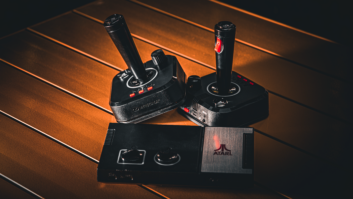
Arlington, Va. — New home video game consoles have reenergized the gaming market, according to the latest research released today by the Consumer Electronics Association (CEA), driving a projected 85 percent increase in wholesale revenue for home video game consoles in 2014.
The study, “The Future of Gaming,” gauges consumer behaviors regarding ownership, device use, gamer segments, video game attachment rates, purchase intent and more.
The report shows that for ownership of traditional gaming hardware, seventh-generation consoles still lead the way. Ownership among online U.S. consumers is highest for the Nintendo Wii (35 percent), Microsoft Xbox 360 (29 percent) and Sony PlayStation 3 (24 percent).
Since their debut in 2013, the new eighth-generation consoles are quickly gaining steam in terms of ownership. The Sony PlayStation 4 and Microsoft Xbox One are now owned by 11 percent and 8 percent, respectively, of online consumers.
While more than half of gamers (54 percent) learn the most about games from friends, family and co-workers, one-third said they also pay attention to retailer websites (33 percent), TV commercials (31 percent) and gaming news websites (30 percent). Consumers also prefer to shop for video games primarily in brick-and-mortar locations: mass merchants (36 percent), general electronics stores (32 percent) and specialty electronics stores (32 percent). One-third (31 percent) of consumers also shop for video games online.
The report showed that portable connected devices are now primary gaming devices for many consumers. According to CEA’s “16th Annual CE Ownership and Market Potential Study,” smartphone and tablet ownership rates (64 percent and 45 percent, respectively) are at their highest rates in history. One in 10 gamers said their primary gaming device is a smartphone (12 percent) or tablet (9 percent), on par with or closely following seventh-generation consoles such as the Xbox 360 (16 percent), PlayStation 3 (12 percent) and Wii (10 percent).
Among consumers who stated their primary gaming device is a smartphone, the most common operating system is Android (51 percent), followed by iOS (41 percent) and Windows Phone (6 percent).
“The gaming industry has been abuzz for months with sizzling sales figures for the eighth-generation consoles, as well as record-breaking releases of games,” said Kevin Tillmann, senior research analyst, CEA. “Rather than simply competing with one another, the eighth-generation consoles are driving gaming sales and enthusiasm across the board. The industry remains a two-headed beast — comprised of traditional game consoles and portable connected devices like smartphones and tablets — but it is certainly stronger than ever.”
According to gamers, their purchase choices most often come down to the quality of games (89 percent) on the system or device. Other common reasons gamers flock to a specific device include the price of games (79 percent), ease-of-use (77 percent), price of system (76 percent) and graphics (75 percent).
In terms of the amount of games owned per primary gaming device, the attachment rates are highest for the Sony PSP, followed by gaming PCs and the Xbox 360. Most of these products have been in the marketplace for a significantly longer amount of time than the Xbox One and PlayStation 4, but both of those new consoles are showing strong attachment rates, especially with digital games, so early in their product lifecycles. The PlayStation 4 digital download attachment rate is 57 percent of physical discs (compared with 42 percent for PlayStation 3) and for Xbox One it is 62 percent (compared with 37 percent for Xbox 360).
CEA said that more than half of gamers (55 percent) indicate they purchased at least one other companion product to improve the gameplay on their primary device. The most common purchases include a television (35 percent) and rechargeable batteries (13 percent).
And according to CEA’s “U.S. Consumer Electronics Sales and Forecast Study” for home video game consoles wholesale revenue is predicted to reach $5.2 billion in 2014, an increase of 85 percent over 2013. An additional 12 percent growth is projected in 2015, as the surge of home console sales in 2014 stabilize.
CEA projects total portable console wholesale revenue of $506 million in 2014, a 7 percent increase over 2013. However, wholesale revenue is expected to fall slightly to $471 million in 2015, a 7 percent decrease, as the portable console market faces continuous pressure from portable connected devices, such as smartphones and tablets.
In video game software CEA projects $13.6 billion in revenue for 2014, an increase of 9 percent over 2013, due in part to attachment rates for new consoles. Additionally, revenue for 2015 is projected to be $14.4 billion, an increase of 6 percent over 2014.













